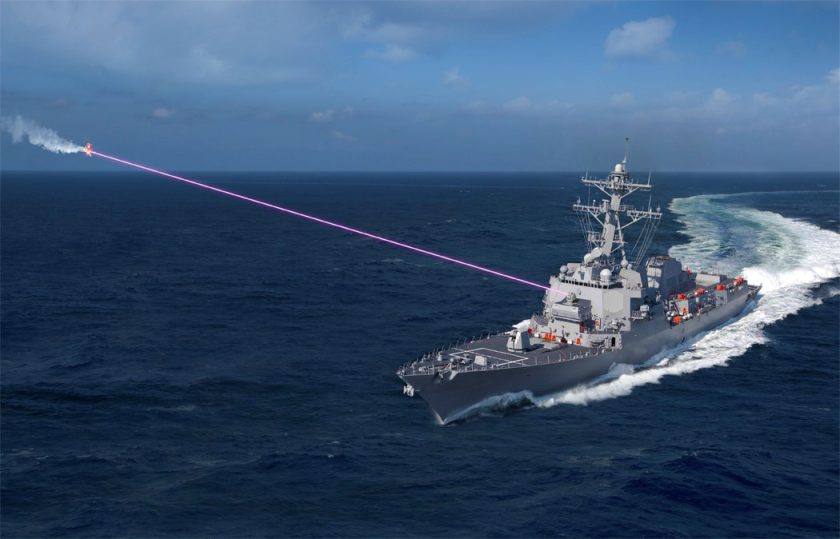Directed-energy weapons designed to counter incoming threats are favoured by US Navy Admiral John Aquilino, according to a report by Defense News, Aquilino: “I’m very encouraged by the high-energy laser capability that’s being experimented with and utilized,” he said during the National Defense Industrial Association (NDIA) Emerging Technologies Conference in Washington. “There’s a few of them on a couple of our ships, to be able to blind, dazzle and kill.”
The weapons come mainly in two forms: high-energy laser and high-power microwave. The former focuses a beam or beams of energy to blind, cut or inflict heat damage on a target. The latter unleashes waves of energy that fry or overwhelm electronic components, says the report.
Expenditure by the US and other nations on directed-energy weapons have increased over recent decades. The Pentagon for the past three years has spent an average USD1 billion on development says Defense News, and requested USD669 million in fiscal 2023 for unclassified research, testing and evaluation and at least USD345 million for unclassified procurement, according to the Congressional Research Service.
“The Navy in the past adopted Lockheed Martin’s High Energy Laser with Integrated Optical-dazzler and Surveillance, or HELIOS, and the in-house Optical Dazzling Interdictor Navy, or ODIN, to tackle drones, small boats and intelligence-gathering systems. Both have been installed aboard destroyers.
“Other services are tinkering with directed energy, as well. The Army in January tapped Epirus for prototypes of its high-power microwave kit known as Leonidas. The deal was worth USD66 million. It also used Lockheed’s Mobile Radio Frequency-Integrated UAS Suppressor, or MORFIUS, to take out drones in a June demonstration.
“Aquilino’s remit includes China and North Korea, as well as allies Australia, Japan and South Korea. The Indo-Pacific is home to more than half the world’s population, some of its biggest ports and a handful of its largest militaries,” says the report.
(Image: Lockheed Martin)
For more information visit:




